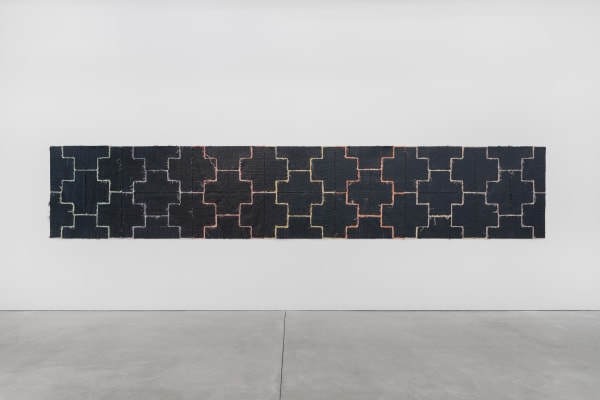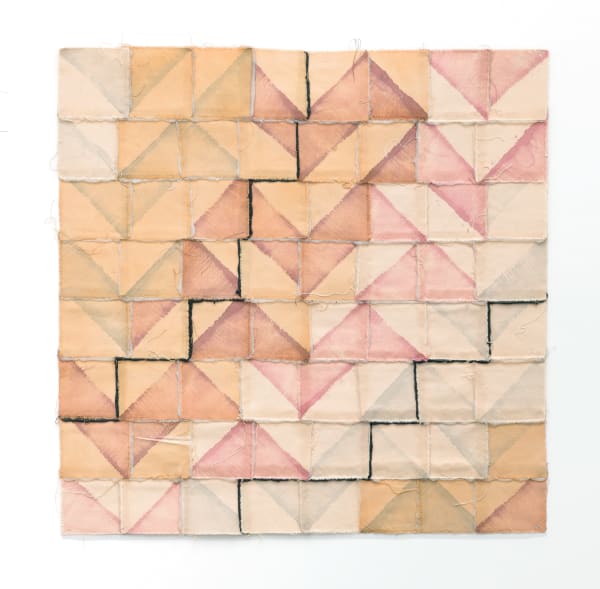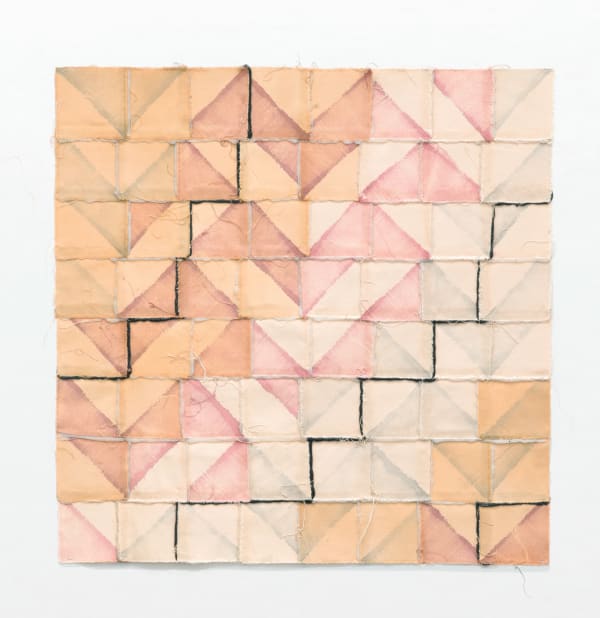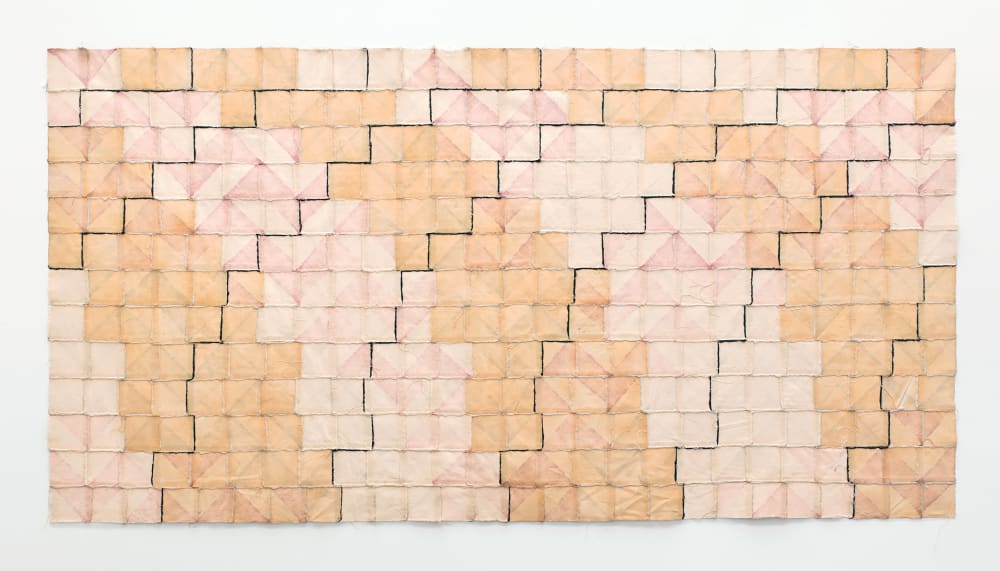WORKS 1970–1973: ALLAN MCCOLLUM
-
Introduction
As part of this year’s Gallery Weekend Berlin, Galerie Thomas Schulte presents an exhibition by Allan McCollum. Alongside works from two of McCollum’s early series, the Constructed Paintings and Bleach Paintings (both begun in 1969), which are exhibited in the gallery’s main space, the interactive project created in collaboration with Matt Mullican, Your Fate (2004), is featured in the Corner Space. Taken as a whole, the works in the exhibition illuminate McCollum’s process-based, systemic, though variegated approach, as well as his ongoing engagement with typology and the production of meaning.
Over the course of his decades-spanning artistic practice, Allan McCollum has often worked serially — facilitating a continuous buildup of numerous smaller, individual parts — through simple yet painstaking tasks executed in repetition. In the process, abstract motifs or silhouetted shapes emerge that seem to make specific references, while remaining open to broader interpretation. Through his use of raw, household and industrial materials (dye, bleach, caulking, etc.) in the early works, processes of production also remain visible in the final outcome.
This is vividly materialized in the Constructed Paintings series. The paintings are formed from strips or squares of canvas that have been individually dyed and stained and subsequently adjoined using rubberized caulking. The overall appearance suggests a quilt, a mosaic, tiling or brickwork – an architectural quality that highlights the paintings’ built-up nature. Their constructedness is also perceptible in the thick, raised lines of caulking at the seams and fraying around the edges. In their somewhat messy, unfinalized appearance and pieced-together approach, their construction not only seems incomplete, but also as though it could continue infinitely.
In grid lines of caulking between individual strips, the application of sand, glitter and other coarse materials, and the use of unstretched canvases — causing threads to dangle and edges to ripple up — the paintings defy a flat, consistent surface. At the same time, because they are stapled directly to the wall, their flatness is reinforced by an obscuring of boundaries between wall and painting, the canvas and its support. In this way, the paintings can be seen as both emphatically two-dimensional and wholly tactile objects, their weight palpable through the tension of their materials.
The Constructed Paintings seem to depict systems — as well as their breaks and irregularities. Geometric forms in various colors move across pieced-together surfaces, entangling and linking with one another, collectively forming zigzags, stripes, or else lines that don’t connect, repetitions that get interrupted. The paintings themselves also form part of a larger system. The patterns formed in each are assembled based on an arithmetic system that ensures each one is unique, allowing for endless, non-repeating iterations.
Similar processes of production can be found in McCollum’s Bleach Paintings. Here, however, construction involves a form of stripping away. McCollum first dyed the canvases grey, blocked off parts of the surface with masking tape and then poured household bleach over them. Like photographs, they have been mechanically and repetitively produced through a process of exposure. The resulting images are characterized by blank, formless swaths, varying greyscales, interrupted patterns of horizontal lines where remnants of grey dye remain, and uneven framing around the edges. In mostly square, or near-square formats, the irregular, unpolished edges here also mirror the fraying edges of the Constructed Paintings, likewise lending an unfinished appearance. And, though structured and produced systematically, the patterns that emerge in the Bleach Paintings once again differ from canvas to canvas — their idiosyncrasies also resulting from an element of chance.
Text by Julianne Cordray -
Works
-
Installation Views
-
INQUIRE ABOUT WORKS BY Allan McCollum

-
Artists on view














